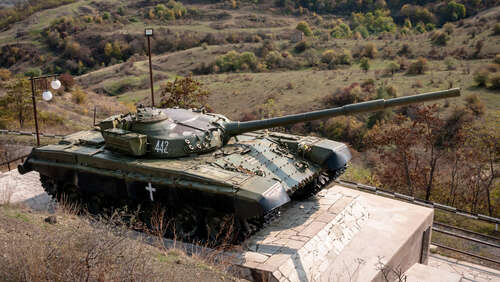
Main battle tanks, of course, are primarily designed to engage and destroy their counterparts on the opposing side. Armor is paramount, then. When it comes to the former, the original T-72, first used in 1973, had considerably less sophisticated protection. It was created as a more trustworthy replacement for the T-64 but did not have the composite armor that the model boasted.
Perhaps as a cost-cutting measure, the first T-72 model’s armor favored thickness over specific materials. In Armor magazine in 1999, James M. Warford noted that this model had “all-steel turrets,” as did the T-72M. Worthier defenses were needed to stand up against the anti-tank options the T-72 would face (as demonstrated in Lebanon in 1982), and the tank NATO would designate to be the T-80 was the product of considerable reinforcement.
In “Main Battle Tanks,” V. I. Murankhovski states (via Warford) that the family of tanks was upgraded with a very special composite armor, which consisted of “an outer layer of steel, a center layer of sand or kvartz (quartz), and an inner layer of steel.” So-called Combination K armor utilized “a center layer of combined steklotekstolit (a glass fiber material) and a package of ceramic plates” and was employed in the T-64A.
The addition of reactive armor (contained explosives that interfere with projectiles striking the hull) to the tank family meant that, overall, the T-80 was rather better protected than the original T-72, though the first model of the former wasn’t compatible with reactive armor.

